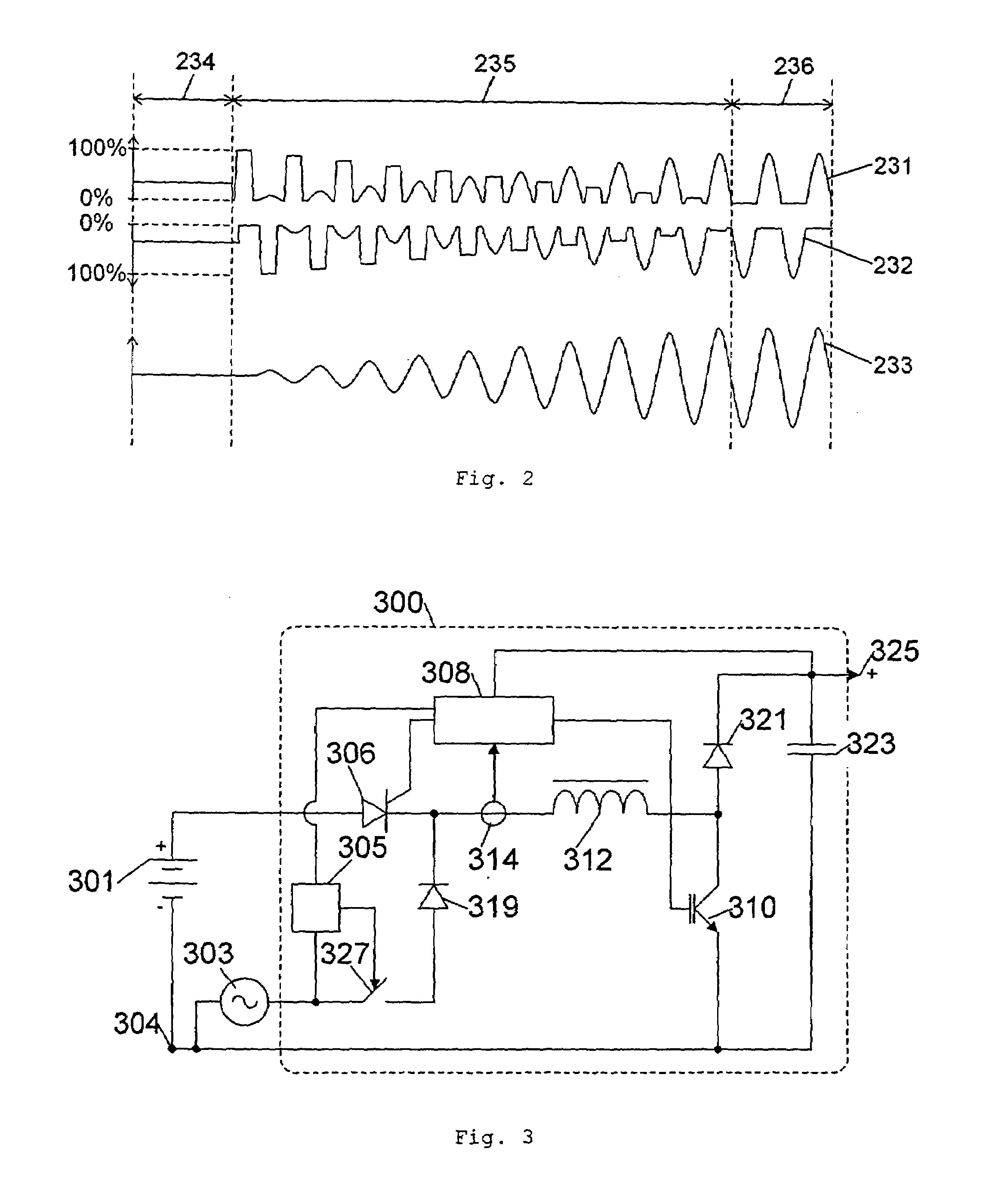Combined AC-DC to DC converter
a converter and ac-dc technology, applied in the direction of ac-dc conversion, electric variable regulation, ac-dc conversion, etc., can solve the problems of inability to perform a gradual switch of supply source without supply loss, inconvenience for the converter unit, etc., and achieve the effect of reducing the number of different converters and smallest possible number of components
- Summary
- Abstract
- Description
- Claims
- Application Information
AI Technical Summary
Benefits of technology
Problems solved by technology
Method used
Image
Examples
Embodiment Construction
[0028]FIG. 1 shows a single-phase combined AC-DC to DC converter 100 with positive as well as negative output voltage. The positive terminal on a battery 101 is connected to the anode on a tyristor 106. The negative terminal on the battery 101 is connected to a common point of reference 104. The cathode on the tyristor 106 is connected to the cathode on a diode 119. The gate on the tyristor 106 is connected to an output on a control circuit 108. The cathode on the tyristor 106 is connected to a coil 112. A current sensor 114 encloses the connection between the tyristor 106 and the coil 112. The current sensor 114 is connected to an input on the control circuit 108. The coil 112 is further connected to collector on a transistor 110. Collector on the transistor 110 is connected to the anode on a diode 121. Emitter on the transistor 110 is connected to the common point of reference 104. An output on the control circuit 108 is connected to the base of the transistor 110. The cathode on ...
PUM
 Login to View More
Login to View More Abstract
Description
Claims
Application Information
 Login to View More
Login to View More - R&D
- Intellectual Property
- Life Sciences
- Materials
- Tech Scout
- Unparalleled Data Quality
- Higher Quality Content
- 60% Fewer Hallucinations
Browse by: Latest US Patents, China's latest patents, Technical Efficacy Thesaurus, Application Domain, Technology Topic, Popular Technical Reports.
© 2025 PatSnap. All rights reserved.Legal|Privacy policy|Modern Slavery Act Transparency Statement|Sitemap|About US| Contact US: help@patsnap.com



